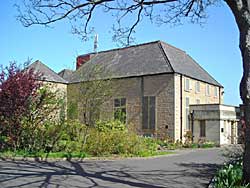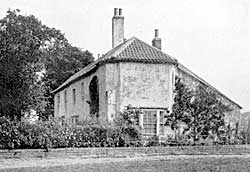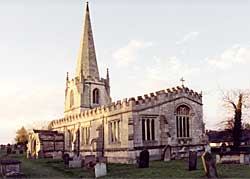
Structual
Dissenters were not allowed to own their own registered places of worship until after the Act of Toleration in 1689. Prior to that they generally met secretly in private homes or in secret outdoor places, although they did have a short period of indulgence, under royal warrant, to licence their homes in 1672. Thus most of the remaining structures come either at the end or just after the period of this essay, though the congregations that meet in them go right back many decades prior to construction.
Old Meeting House, Mansfield

Old Meeting House, Mansfield. © Antony Dixon and licensed for reuse under this Creative Commons Licence.

Scrooby Manor House, c. 1910.

St Wilfrid's church, Scrooby.
Erected in 1702, this building is the oldest non-conformist place of worship still remaining in Nottinghamshire. Its origins lie in the fact that Mansfield in the 1660s was not an incorporated town and so under the terms of the Five Mile Act (1665) a number of the county’s Presbyterian clergy resided in the town until 1689 and a congregation gathered around them. The first minister appointed formally, and who initiated the building, was the Revd Robert Porter. The old building was enlarged in 1870 but substantial features from the 1702 building can still be clearly seen.
Scrooby Manor House
From 1606-1607 William Brewster junior lived at this site and held separatist meetings in his rooms prior to the departure of the Pilgrim Fathers, first to Holland and then to America. The house was substantially demolished between 1636-37 but in 1750 parts of a remaining wing were renovated into the farm house that still can be seen today.
St Wilfred’s Parish Church, Scrooby
The parish church which many of the original Pilgrims attended prior to their separation from the church in 1606. Build in the Perpendicular gothic style (popular 1350-1550) it is famous for its octagonal spire set on a square tower. It was rebuilt from a ruinous state in 1830 and heavily restored again in 1864.
High Pavement Presbyterian/Unitarian Chapel, Nottingham
Originally the site of Nottingham’s Presbyterian congregation under the pastoral charge of two important seventeenth century Presbyterian divines: John Whitlock and William Reynolds. The foundation stone was laid in 1690, within 12 months of the Toleration Act. By the mid eighteenth century the congregation was renowned for its Liberal theological teachings but by 1802 it has become Unitarian. The current building, on the same site as the original chapel, was designed by Bristol architect, Stuart Colman, and was opened in 1876.
Castle Gate Congregational Church, Nottingham
An independent congregation was meeting for worship (possibly not far from the current site) as early as 1655 under the care of future Fifth Monarchist preacher Thomas Palmer. A meeting place was registered soon after the Toleration Act (1689) and probably stood on the current site. This much altered structure was replaced by the present building in 1863.